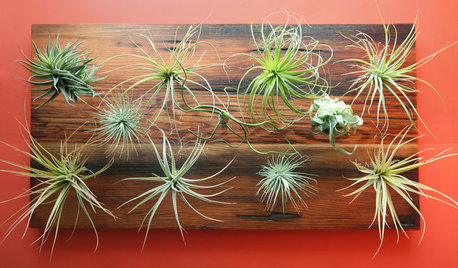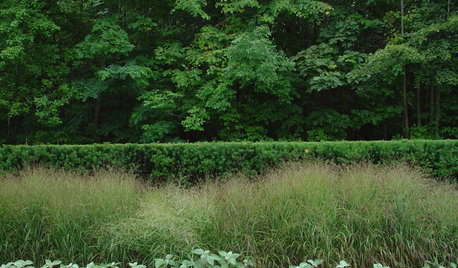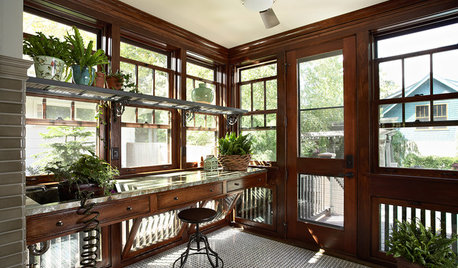soil vs. media vs. dirt -- in potted plants
ken_adrian Adrian MI cold Z5
15 years ago
Related Stories

CONTAINER GARDENSContainer Gardening Basics: The Dirt on Soil
Learn the types of potting soil available and the best mixes to help your containers thrive
Full Story
FARM YOUR YARDHow to Get Good Soil for Your Edible Garden
The nutrients in your soil feed the plants that feed you. Here are tips on getting it right — just in time for planting season
Full Story
URBAN GARDENSDirt Optional: Amazing Air Plants for Wall or Tree
Succulents and air plants are stunning on winter walls — and the Christmas tree
Full Story
GARDENING GUIDES10 Solutions for Soggy Soil
If a too-wet garden is raining on your parade, try these water-loving plants and other ideas for handling all of that H2O
Full Story
GARDENING GUIDESHow to Pick a Mulch — and Why Your Soil Wants It
There's more to topdressing than shredded wood. Learn about mulch types, costs and design considerations here
Full Story
GARDENING GUIDESHow to Stop Worrying and Start Loving Clay Soil
Clay has many more benefits than you might imagine
Full Story
GARDENING GUIDESGreat Design Plant: Taxus x Media ‘Hicksii’
Need a strong, silent type in your garden? Hicks yew may be your perfect match
Full Story
GARDENING GUIDESGreat Design Plant: Wild Lupine Dresses Up Rocky Gardens
Spiky blue flowers and a high tolerance for poor soil make this plant ideal for tough sites
Full Story
GARDENING GUIDESInvite Mining Bees to Your Garden by Planting Their Favorite Plants
Look for mining bees (Andrena) pollinating woodland wildflowers in U.S. gardens this spring
Full Story
STUDIOS AND WORKSHOPSRoom of the Day: Potting and Puttering in Toasty Warmth
Minnesota winters are no match for this heated potting room, mudroom and changing room, which even has a dog shower
Full Story







pasadena
barbaraincalif
Related Discussions
Large-scale growing of container basil: potting soil vs 5-1-1 mix
Q
growing pots vs. growing directly in the soil?
Q
Soil-less potting mix vs. compost?
Q
Potted vs Planted in soil
Q
ken_adrian Adrian MI cold Z5Original Author
pineresin
deltaohioz5
ken_adrian Adrian MI cold Z5Original Author
gardengal48 (PNW Z8/9)
schmoo
toucanjoe
toucanjoe
schmoo
botann
gardengal48 (PNW Z8/9)
ken_adrian Adrian MI cold Z5Original Author
schmoo
gardengal48 (PNW Z8/9)
schmoo
brandon7 TN_zone7
lou_spicewood_tx
ken_adrian Adrian MI cold Z5Original Author
gardengal48 (PNW Z8/9)
brandon7 TN_zone7
tapla (mid-Michigan, USDA z5b-6a)
lou_spicewood_tx
ken_adrian Adrian MI cold Z5Original Author
gardener365
ken_adrian Adrian MI cold Z5Original Author
herman_neutics
tunilla
barbaraincalif
herman_neutics